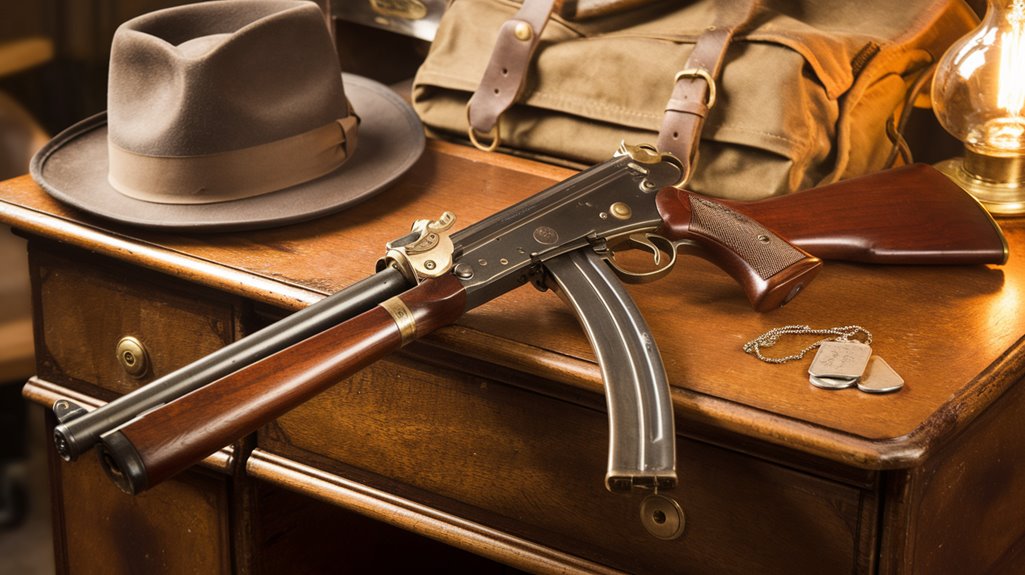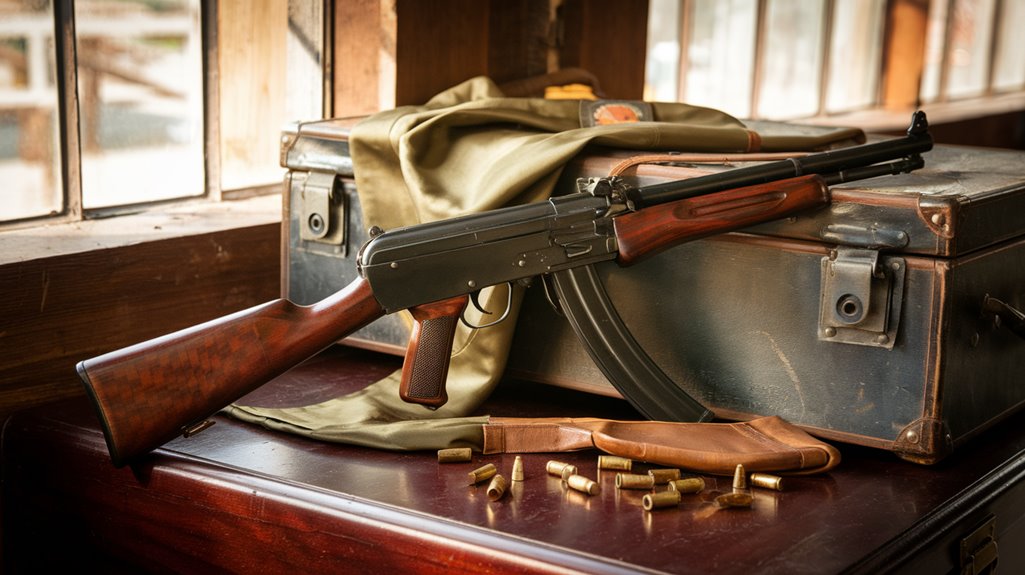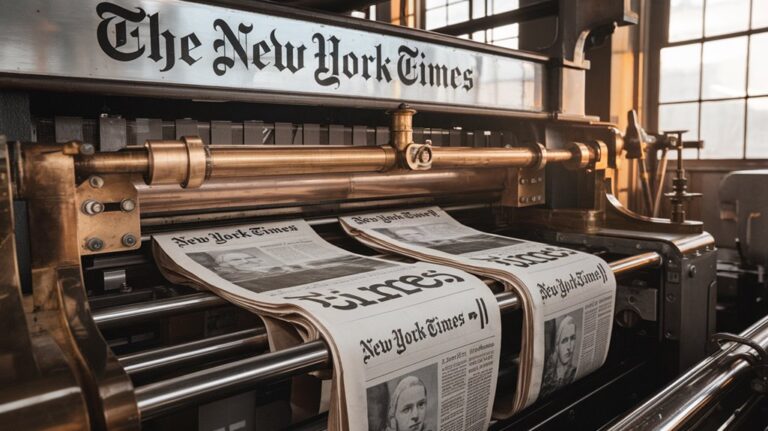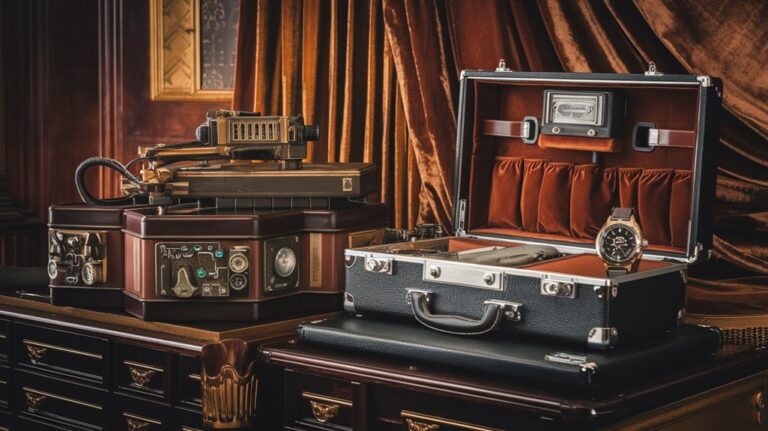From Gangsters to GIs: The Tommy Gun’s Infamous Journey
While you might picture the Thompson submachine gun in the hands of pinstriped mobsters, it's just as likely to have defended freedom in the muddy trenches of World War II. You'll find this weapon's dramatic transformation mirrors America's own journey through the 1920s and '40s. From Chicago's back alleys to the beaches of Normandy, the Tommy Gun didn't just shoot bullets—it shot its way into history, leaving behind a legacy that's as complex as the era that shaped it.
Birth of the Trench Broom: Thompson's Vision
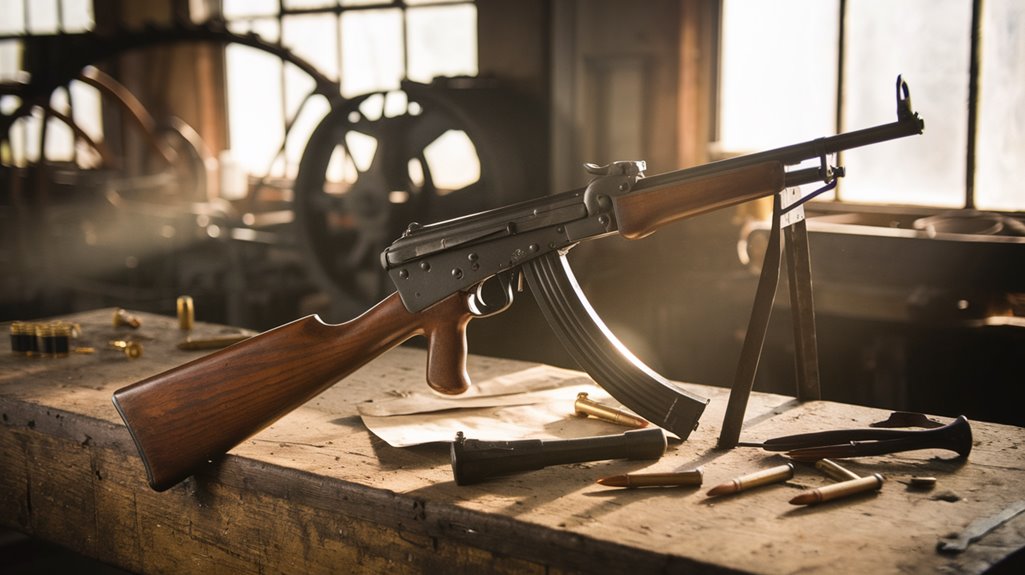
While World War I demanded innovative solutions for trench warfare, John T. Thompson envisioned a revolutionary weapon that would bridge the gap between rifles and pistols.
Thompson's inspiration came from the brutal reality of close-quarters combat, where soldiers needed a lightweight, automatic weapon to clear enemy trenches effectively.
You'll find the roots of this development in 1916 when Thompson established the Auto-Ordnance Company, partnering with John Blish and Theodore G. Eickhoff.
Their collaboration led to a breakthrough when Eickhoff suggested incorporating .45 caliber pistol ammunition into Blish's innovative recoil system.
Drawing from his experience as chief ordnance officer during the Spanish-American War, Thompson understood the critical importance of reliable weaponry in combat situations.
Originally nicknamed the Trench Broom for its effectiveness in clearing enemy positions, the weapon would later become known by its more infamous monikers.
While the war ended before the weapon saw combat, Thompson's dedication to creating the perfect trench-clearing tool resulted in the first working model by 1919 and an official patent in 1920.
Rise of the Tommy Gun in the Underworld
Though Thompson designed his weapon for military use, fate had different plans. When Frank McErlane introduced the Tommy Gun to the criminal underworld, it revolutionized gang warfare forever.
You'd find this rapid-fire weapon becoming the ultimate enforcer in criminal enterprises, despite its hefty price tag and bulky design. The weapon's high rate of .45 ACP ammunition made it devastating in close-quarters combat. The gun's impressive fire rate of 600-1200 rounds per minute made it particularly effective in urban warfare.
While Hollywood might've you believe every gangster packed a Tommy Gun, the reality is that only a few hundred were actually used in crime.
You'll recognize its iconic status in pop culture, largely due to its association with notorious figures like Al Capone and its portrayal in films.
The weapon's impact on the Prohibition era was undeniable – from attempted concealment in violin cases to its role in violent territorial disputes, the Tommy Gun became synonymous with 1920s lawlessness.
Military Revolution: Wartime Adoption
Despite its early gangland notoriety, the Thompson submachine gun found its true calling in military service.
You'll find that while the U.S. military's initial adoption was modest in the 1920s, WWII transformed the weapon's role in military strategy. The Marines pioneered its use in Nicaragua, but it wasn't until 1941 that the Army fully embraced the Tommy gun's potential. The cost per unit dropped significantly during wartime production.
As weapon effectiveness became essential in WWII, production soared to 10,000 units monthly, with total wartime output exceeding 1.5 million guns. The M1928A1 model became the standard submachine gun for American forces before World War II.
You'd see Thompsons in the hands of Allied special forces, Rangers, and paratroopers across every major theater. While soldiers praised its stopping power in close combat, its weight proved challenging in jungle warfare.
The Tommy gun's legacy lives on, having shaped modern submachine gun design and military doctrine.
Early Field Tests and Combat Chronicles
Before achieving its wartime fame, the Thompson submachine gun underwent essential field testing that shaped its reputation. Early field tests revealed mixed results in combat effectiveness, with the Irish Republican Army reporting success in only 32% of their operations. Military experts had already recognized issues with smaller calibers after .38 caliber bullets failed against determined adversaries in the Philippine-American War. The weapon's transition to non-military use in 1919 led to its widespread law enforcement adoption.
You'll find the Tommy gun's initial combat baptism occurred during the Battle of Blair Mountain in 1921, where West Virginia state troopers put it to the test.
Notable early combat applications included:
- The U.S. Marine Corps deployment during the Banana Wars
- The IRA's extensive use during the Irish War of Independence, with 653 units imported
- U.S. Postal Inspection Service adoption for security operations
Despite complaints about its weight and accuracy beyond 50 yards, the Thompson's versatility caught the attention of various organizations, from law enforcement agencies to criminal enterprises.
Engineering Evolution and Design Changes
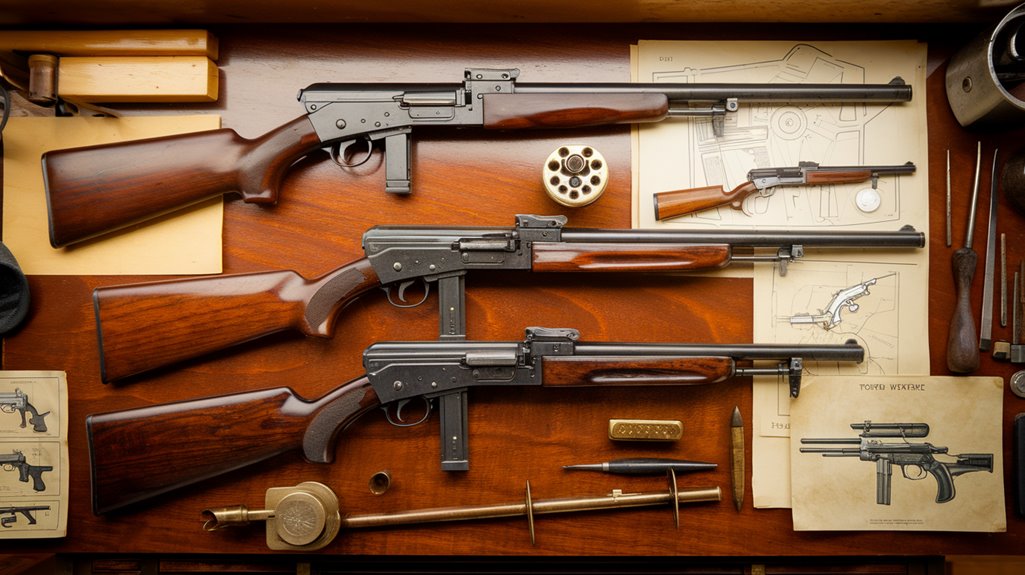
When John T. Thompson founded Auto-Ordnance in 1916, he couldn't have imagined how his weapon's engineering would evolve. Inspired by Blish's breech mechanism patent, Thompson assembled a team in Cleveland to develop what would become an iconic firearm.
The original design's limitations led engineers to adopt a friction-delayed blowback action instead. The weapon's notoriety grew as it became the gangsters' favorite during the violent era of bank robberies.
You'll find the most significant changes came with the Model 1928, which reduced the firing rate from 1,500 to 830 rounds per minute. The addition of the Cutts Compensator in 1926 improved accuracy, while later M1 and M1A1 models simplified the design by removing cooling fins. The initial steep civilian price tag of $200 significantly limited early sales and adoption of the weapon.
Magazine capacity evolved from the heavy "L" drum magazines to more practical 30-round box magazines, addressing soldiers' complaints about weight and reliability. Each modification made the Thompson more effective and user-friendly for military operations.
The Thompson's Cultural Footprint
Three distinct forces shaped the Tommy Gun's lasting cultural impact: Hollywood, organized crime, and wartime heroics.
You'll find its cultural symbolism deeply embedded in America's collective consciousness, from its notorious role in the St. Valentine's Day Massacre to its heroic service in World War II.
The weapon's media representation evolved dramatically through:
 Postal Service ordered 200 Thompsons to protect against thieves, bridging its use between law enforcement and civilian applications.
Postal Service ordered 200 Thompsons to protect against thieves, bridging its use between law enforcement and civilian applications.
Whether wielded by Al Capone's gang or Allied forces, the Thompson's distinctive profile has transcended its original purpose.
It's no longer just a firearm – it's become a powerful symbol of both lawlessness and justice, permanently etched into popular culture's understanding of 20th-century America.

